Marines (Crimson Worlds) Read online
Page 26
Garret watched the scanning reports closely. Ten, at least, of the enemy ships were destroyed outright, and 20 or more suffered significant damage. The force was depleted and disordered when they finally entered range of the station and launched a ragged salvo of missiles. The enemy fire, degraded by the damage from the minefield, was far less effective than Garret had feared, and his defensive countermeasures had been extremely effective. Launched at very high speeds and clearly targeted for the station, the missiles were on vectors Garret had predicted, which made them easy targets for the linked point defense arrays of his defending forces.
He had taken a chance, positioning his entire fleet nearly motionless, in direct support of the station. The resulting combined defense network was extremely potent against missile fire, but it left his ships out of position to engage enemy vessels directly. If the attackers had sent their capital ships in at moderate velocity, formed up for battle, Garret could have been at a disadvantage. But his instincts had been spot on. Missile after missile was intercepted, and in the end only three got close enough to harm the station - mostly surface damage and radiation penetration in outer compartments.
The station did not sit idly and endure the enemy's fire; it unleashed a heavy missile broadside against the oncoming ships just before they entered energy weapon range. The missiles were launched on a broad spread, timed to disorder and damage the enemy ships before they fired their lasers.
The attacker's vector still took them right toward the station, and they attacked with their close-range laser batteries as they closed. Pulses of highly focused energy ripped into the station, destroying surface systems and slicing through armor plating. Lasers are difficult to defend against, though their short effective range tends to limit their effectiveness.
The defenders did have some countermeasures, however. They fired spreads of torpedoes that exploded and filled the space around the station with clouds of reflective metallic particles. Informally called angel dust, it was designed to diffuse and reflect the incoming lasers, reducing their effectiveness against the target. Highly effective when properly targeted, it was a difficult system to use well; the timing and positioning had to be perfect.
Garret was pleased so far. The station didn't have heavy laser batteries, only smaller anti-missile units, so the enemy's closer range fire went unanswered. Still, they had hit the enemy hard with their missile volley and, with the damage done by the mines, the attacking task force was down to 30% effectiveness. Even better it would take them 5 or 6 days just to decelerate. It would be at least a week before they were again a threat. He had the station fire another volley after then as they passed, but it would take those missiles, fired from a stationary platform with no intrinsic velocity, a long time to accelerate and catch the enemy force. But it would give the enemy something to think about as they decelerated and attempted to re-vector back toward the battle zone.
The Western Alliance fleet, positioned for missile defense around the station, was not formed to fire at the enemy task force as it zipped by, but Garret wasn't concerned. He wanted to preserve his supply of missiles anyway; the enemy battleline would be coming.
With the initial attack on the station repulsed, the admiral quickly shifted his attention to the inevitable second assault. He barked out commands, ordering his group commanders to get their ships moving. The enemy's next wave, briefed by spy drones accompanying the first group, would know his deployments, and he was a sitting duck if he remained where he was. His ships were at a dead stop and tied into the station's defensive network - positioned to intercept missiles, not engage enemy capital ships. Now he needed to build some velocity, and he needed to do it quickly.
Fusion reactors ran at full capacity and beyond, as his battleships and support vessels applied maximum thrust. The crews, wearing protective G-suits, were strapped into their acceleration couches as their ships' AIs executed full thrust burns, straining to get the fleet into combat formation as quickly as possible. Within moments, the slowest ships in the fleet were accelerating at 12g, and the newer vessels at 16-18, the maximum their drug and technology-assisted human crews could endure for any sustained period.
Attack boats and escort vessels clustered around the capital ships, taking up their support positions. When they were patrolling the frontier or scouting deep space the smaller ships had many uses, but in a major battle they had one duty – support the capital ships.
The vessels of the fleet were executing controlled burns to build velocity, cutting thrust at precise intervals so the crews could physically recover from massive g forces and analyze incoming data. While enduring the forces exerted by maximum acceleration, even experienced crews could do little but lie motionless on their couches.
"Admiral...energy spike at the Alpha Cephei warp gate. Inbound transit imminent." Lieutenant Simon was young to be communications officer to a full admiral, but she was a rock. The biggest fleet ever assembled was probably going to come streaming through that gate in a few seconds, but her voice was calm, steady.
"Acknowledged." Here they come, Garret thought, then...no, that data's more than an hour old. They are already here. He looked at the plot of the fleet on the main screen and sighed quietly. A lot of his men and women were going to die over the next couple days. "Nelson, engage."
"Engaged, admiral." The voice was emotionless, tinny. The naval AIs didn't have the semi-creepy soothing voices the marine versions did, though the tradition of naming the things was shared. Garret's choice was painfully unoriginal. There were dozens of Nelsons, as well as Halseys, Porters, and other wet navy greats among the quasi-sentient artificial intelligence units in the service. "Enemy units now entering system, inbound at .06c and decelerating."
Garret leaned back in his command chair. His units were currently accelerating at 6g, which was uncomfortable but bearable as long as he remained seated. "I want breakdowns as soon as they are available, Nelson. Raw ship totals and battlegroup formations."
"Yes, Admiral." The naval AIs also lacked the more creative personalities of their marine counterparts. The navy thought that smartass computers were beneath their dignity.
Garret watched as the plotting screen split into two sections, one showing his own fleet at reduced size and the other the enemy ships emerging into the system, the data transmitted by hundreds of small scanners deployed around the gate. Ship after ship came through, and they kept coming long after they outnumbered the waiting defenders.
"Nelson, project ETA to initial engagement range."
Garret had his AI piped into his headset. "Assuming you elect to continue on our present acceleration plan and the enemy forces decelerate at a constant rate, initial engagement is projected in 30 to 33 hours. I shall maintain an updated estimate based on noted changes in deployments."
More than a day, Garret thought. His own estimate had been pretty close to the computer-generated one, though of course those numbers could change if he or the enemy commander modified their maneuvering.
Naval battles are, in many ways, endurance contests. The vast distance involved creates considerable lag times between points of engagement. When the fleets enter each other's ranges there is an exchange of fire. Ships are battered by nuclear explosions and sliced apart by close-range lasers. Crews die, victims of explosions, radiation, decompression.
Then, unless the fleets are on parallel courses, the surviving ships pass their adversaries and move out of effective range until they can exert enough thrust to re-vector back toward the enemy or attempt to disengage and escape to a friendly warp gate. Hours, even days, can pass between instances of engagement.
Garret's plan was unconventional and therefore unexpected. His ships accelerated at full blast 60% of the way to the projected meeting point, then the capital ships launched their bombers and the fleet itself braked hard, decelerating rapidly while the strike wings blasted toward the enemy. The bomber squadrons accelerated at full thrust, adding to the intrinsic velocity imparted by their launch platforms. Garr
et wanted his bombers going in hard and fast, so he launched them before he slowed the battleships carrying them. This meant his strike would go in well before his missile volleys, which was counter to the "book." But then, most of what Augustus Garret did was unconventional.
"Admiral, your bio-readings indicate considerable fatigue and low blood sugar. It has been seven hours since you have eaten. I have a stimulant prepared, but I would recommend postponing injection until enemy contact is more imminent." Garret's AI monitored him constantly, working to keep him informed and functioning at peak efficiency for as long as he needed to be. Sometimes that made it a nag, but it was usually right as well.
The admiral didn't answer, but he grabbed a nutrition bar from the small compartment in the command chair and nibbled at it. The high-calorie, supplement-rich bars were designed for crews to eat during sustained combat conditions. He made a face as he took his first bite. God, I hate these things, he thought. Better than what the marines get, at least. Ground assault units took meals intravenously for 36 hours prior to a drop. Vomiting in your armor during a rough landing would not enhance your combat efficiency.
The ships were at battlestations, but the crews alternated slumber periods during the approach phase. It's not easy to rest being crushed to death in an acceleration couch with battle imminent, but they did the best they could; if you're tired enough you can sleep anywhere. When they entered the battle zone, the whole crew would be pumped up on stimulants anyway.
The Alliance fleet had nine battlegroups, every one of them built around a single capital ship. Each of Garret's battleships was supported by its own flotilla of supporting craft. There were two, or occasionally three, cruisers in each group, heavily armed and reasonably durable, but lacking the truly heavy weapons and fighter-bomber squadrons carried by the battlewagons.
A destroyer flotilla was also attached, along with one or two squadrons of fast attack ships (FAs). The destroyers were there mostly to defend the capital ship against enemy bombers and attack craft, though they also carried missiles to attack heavier enemy ships. The attack ships were fast and heavily armed, designed to go after the enemy battleships and cruisers. Sardonically called "suicide boats" by their crews, they were heavily armed and fast, but light on defense.
Each Alliance battlegroup also had a single point defense ship, an innovation that had been pushed heavily by Garret earlier in the war. Mostly modifications of older cruiser hulls, these vessels had no heavy weaponry at all, only anti-missile rockets, laser batteries, and angel dust launchers. Pure defensive platforms, they gave Garret's groups a battleship's worth of added point defense capacity.
Garret had his crews brought to full readiness 30 minutes before optimum launch range. Keeping crews sharp and effective during a days-long combat situation was one of the more difficult aspects of fleet command. Garret had a good feel for handling his people, and they were fanatically loyal to their hero-admiral.
The bombers would be hitting the enemy fleet just before the incoming vessels entered missile range. The bombers were likely to take heavy losses since the defenders were not simultaneously fending off missiles and could focus solely on the strike force. But the bomber wings would also inflict their damage before the enemy could launch at the main Alliance fleet.
It was a gamble, one Garret hoped would pay off. Ships went into battle with external racks of missiles to supplement the magazines they carried internally. It was a cheap and easy way to increase firepower, but ships still carrying their racks were at a heavy disadvantage in combat. The missiles were expected to launch before the ships were within range of enemy attack, but Garret's early bomber strike was forcing the issue. If their attack compelled the target ships to jettison the racks, it would cut the enemy firepower significantly - above and beyond any damage inflicted.
"Strike force Alpha, commencing attack run." The com in Garret's earpiece fed him the incoming transmissions from the bomber groups.
"Strike force Beta, commencing attack run." The second group commander echoed the first, followed by the leaders of the Gamma and Delta wings. Four waves of fighter-bombers, 144 ships and 576 men and women running a gauntlet into the maw of the largest space fleet ever assembled.
Into the Valley of Death, thought Garret, recalling an ancient poem about six hundred doomed warriors in a different, yet somehow disturbingly similar situation.
Garret's planning was sound. If his stratagem worked it could save thousands of crew on the ships of the fleet. Missiles jettisoned or destroyed in their launchers couldn't be used to blow his ships apart. But it was a brutal type of calculus that he could perform but never quite stomach. He had known he was sending most of those bomber crews to their deaths, but he did it anyway. They had known too, yet they went unquestioningly. They knew what was at stake.
The bombers were equipped with heavy ECM and, not expecting an attack at this range, the enemy was totally unprepared. Garret listened to the reports coming in, knowing they were twelve minutes old when he heard them and wondering if the speakers he was listening to were actually already dead.
The enemy commander hurriedly ordered his ships to jettison their external missiles and bring their point defense arrays online. Garret's first objective had been attained before his bombers fired a shot. Now they plunged in and, as they had been ordered, ignored all the escorts of the enemy fleet, driving straight to the capital ships. They had one goal, and they targeted all of their ordnance at the launching facilities of the enemy battleships. The Alliance bombers were armed with close-range plasma torpedoes, small sprint missiles that triggered a controlled nuclear reaction just before impact and struck the target as a ball of superheated ionized gas. One of the Alliance's newest weapons, the torpedoes were difficult to target effectively, but extremely powerful. Garret's crews had been practicing for weeks.
"We got in fast, missile fire is light." That was Alpha commander's report, soon reinforced by the others. The enemy had been slow to get anti-fighter missiles launched. Garret's surprise launch had given the bombers a chance to get close enough to make their attack.
The good news didn't last. The bombers were heading straight at the enemy capital ships, and the defensive laser fire from the escort vessels they were ignoring started to take a heavy toll. The bombers were on predictable targets, moving at high velocity straight through the enemy fleet. Almost half of them were gone by the time they reached their designated launch points. They fired their torpedoes and then, strapped in their couches, they blasted off at maximum acceleration, trying to outrun the missile volleys sent after them. They had done their job for Garret; now they were working for themselves.
By the time they had cleared the enemy fleet, just under a third of them were left, and they began the slow process of decelerating and vectoring back to the designated rendezvous point. They'd zipped past their targets too quickly to allow for effective damage assessment, so neither the exhausted survivors nor the admiral yet knew that their devastating strike had ravaged the enemy launch bays. Fewer than half of the ships were going to get their own bombers launched and, combined with the loss of external missiles, the enemy's firepower had been degraded as much as 50%.
"Entering optimum launch range, Admiral." Lieutenant Simon's voice brought Garret out of his guilt-ridden trance.
He put his arm on the edge of the command chair. "Give me a boost, Nelson." He felt the small pinprick as the AI directed the injection of the stimulant cocktail designed to maximize mental clarity and effectiveness. Garret felt the drug pushing away the fatigue and the crushing headache. By the time the battle was over he was likely to be a strung-out wreck, but none of that mattered now.
He ordered all ships to flush their external racks in a first volley, and then fired virtually every remaining missile in the fleet in a series of waves, another violation of SOP as outlined in the "book." Only his destroyers kept their small arsenals; every other missile in the fleet was now heading toward the enemy.
His battleships launch
ed 72-96 missiles each, with the gargantuan Yorktowns firing a total of 144. All told, the battleships and cruisers had fired a volley of over 1,000 missiles, each with multiple warheads. His ships were decelerating, and they were moving at a considerably lower rate than the approaching enemy fleet. The lower intrinsic velocity imparted to their missiles meant the incoming volley would hit them before their own salvoes struck, a difference of no particular consequence beyond the possibility that Garret wouldn't still be alive to find out how much damage his attack inflicted.
"Nelson, course change. All ships are to conduct full burns. Thrust plan Vega. Execute in 30 seconds." Garret could have given the order to Lieutenant Simon, but as excellent an officer as she was, the AI would get the orders transmitted to over 160 ships a lot faster than any human could. Garret was conducting evasive maneuvers, trying to position his fleet away from the incoming missile strike. The thrust plan was random, something he made up himself, designed to scatter his ships, making them a tougher target. The enemy's weapons were coming in at a fairly high velocity, and they would have a harder time changing course than his slow-moving vessels.
"Incoming missiles. Detonations projected in eight minutes." Lieutenant Simon was still solid, but with a billion megatons of nuclear bombs heading at them, Garret could excuse the slight waver in her voice.
"Full impact procedures, all ships."
"Yes sir." Simon relayed his order on the fleet command circuit.
"Impact procedures require all personnel to be wearing helmets, Admiral." Nelson's voice was as unemotional as ever, but Garret was still annoyed as he reached down and grabbed his helmet. He knew it was irrational, but he hated being nagged, particularly by a machine.

 The Emperor's Fist
The Emperor's Fist Blood on the Stars Collection 1
Blood on the Stars Collection 1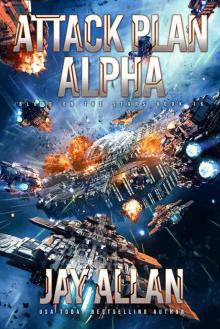 Attack Plan Alpha (Blood on the Stars Book 16)
Attack Plan Alpha (Blood on the Stars Book 16) BOB's Bar (Tales From The Multiverse Book 2)
BOB's Bar (Tales From The Multiverse Book 2) The Others
The Others Nightfall
Nightfall Empire's Ashes (Blood on the Stars Book 15)
Empire's Ashes (Blood on the Stars Book 15) Wings of Pegasus
Wings of Pegasus Crusade of Vengeance
Crusade of Vengeance The Last Stand
The Last Stand Blackhawk: Far Stars Legends I
Blackhawk: Far Stars Legends I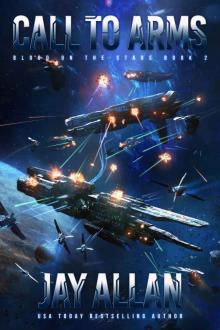 Call to Arms: Blood on the Stars II
Call to Arms: Blood on the Stars II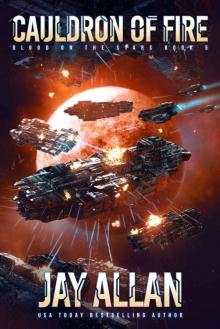 Cauldron of Fire (Blood on the Stars Book 5)
Cauldron of Fire (Blood on the Stars Book 5) Revenge of the Ancients: Crimson Worlds Refugees III
Revenge of the Ancients: Crimson Worlds Refugees III Crimson Worlds Successors: The Complete Trilogy
Crimson Worlds Successors: The Complete Trilogy The Grand Alliance
The Grand Alliance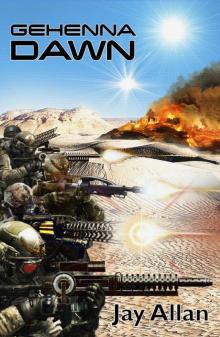 Portal Wars 1: Gehenna Dawn
Portal Wars 1: Gehenna Dawn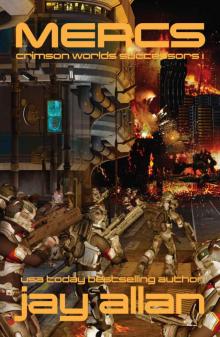 MERCS: Crimson Worlds Successors
MERCS: Crimson Worlds Successors Crimson Worlds: 08 - Even Legends Die
Crimson Worlds: 08 - Even Legends Die Winds of Vengeance
Winds of Vengeance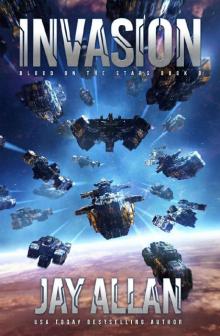 Invasion (Blood on the Stars Book 9)
Invasion (Blood on the Stars Book 9) A Little Rebellion (Crimson Worlds III)
A Little Rebellion (Crimson Worlds III)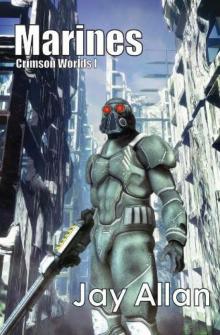 Marines
Marines Black Dawn (Blood on the Stars Book 8)
Black Dawn (Blood on the Stars Book 8)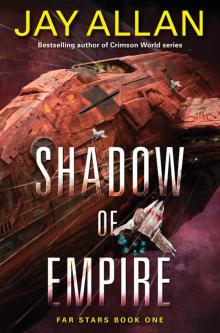 Shadow of Empire
Shadow of Empire Galactic Frontiers: A Collection of Space Opera and Military Science Fiction Stories
Galactic Frontiers: A Collection of Space Opera and Military Science Fiction Stories Winds of Vengeance (Crimson Worlds Refugees Book 4)
Winds of Vengeance (Crimson Worlds Refugees Book 4) Dauntless (Blood on the Stars Book 6)
Dauntless (Blood on the Stars Book 6) Portal Wars: The Trilogy
Portal Wars: The Trilogy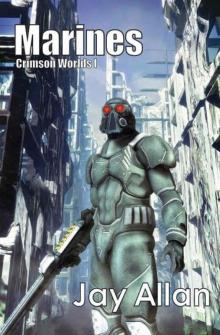 Marines cw-1
Marines cw-1 The Cost of Victory
The Cost of Victory Marines (Crimson Worlds)
Marines (Crimson Worlds) The Ten Thousand: Portal Wars II
The Ten Thousand: Portal Wars II The White Fleet (Blood on the Stars Book 7)
The White Fleet (Blood on the Stars Book 7) Crimson Worlds Collection III
Crimson Worlds Collection III The Black Flag (Crimson Worlds Successors Book 3)
The Black Flag (Crimson Worlds Successors Book 3) Tombstone
Tombstone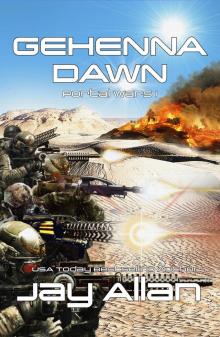 Gehenna Dawn
Gehenna Dawn A Little Rebellion (Crimson Worlds)
A Little Rebellion (Crimson Worlds)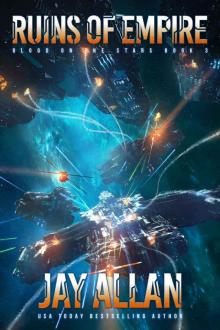 Ruins of Empire: Blood on the Stars III
Ruins of Empire: Blood on the Stars III Dauntless
Dauntless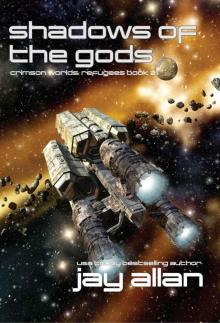 Shadows of the Gods: Crimson Worlds Refugees II
Shadows of the Gods: Crimson Worlds Refugees II The Dragon's Banner
The Dragon's Banner Echoes of Glory (Blood on the Stars Book 4)
Echoes of Glory (Blood on the Stars Book 4)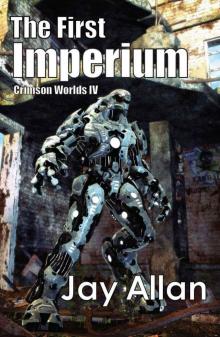 Crimson Worlds: 04 - The First Imperium
Crimson Worlds: 04 - The First Imperium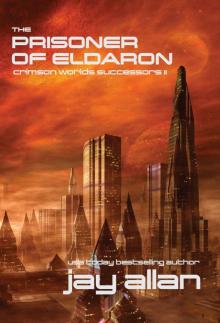 The Prisoner of Eldaron: Crimson Worlds Successors II
The Prisoner of Eldaron: Crimson Worlds Successors II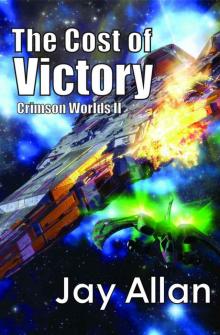 The Cost of Victory (Crimson Worlds)
The Cost of Victory (Crimson Worlds) Duel in the Dark: Blood on the Stars I
Duel in the Dark: Blood on the Stars I Into the Darkness: Crimson Worlds Refugees I
Into the Darkness: Crimson Worlds Refugees I Crimson Worlds Refugees: The First Trilogy
Crimson Worlds Refugees: The First Trilogy The Cost of Victory cw-2
The Cost of Victory cw-2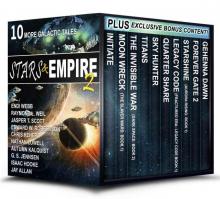 Stars & Empire 2: 10 More Galactic Tales (Stars & Empire Box Set Collection)
Stars & Empire 2: 10 More Galactic Tales (Stars & Empire Box Set Collection) Flames of Rebellion
Flames of Rebellion Stars & Empire: 10 Galactic Tales
Stars & Empire: 10 Galactic Tales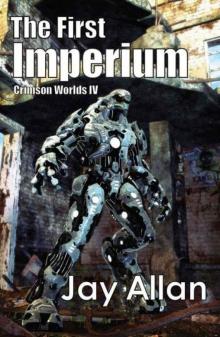 The First Imperium cw-4
The First Imperium cw-4 Crimson Worlds: 07 - The Shadow Legions
Crimson Worlds: 07 - The Shadow Legions Storm of Vengeance
Storm of Vengeance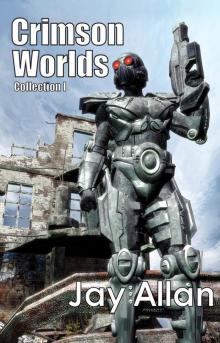 Crimson Worlds Collection I
Crimson Worlds Collection I Rebellion's Fury
Rebellion's Fury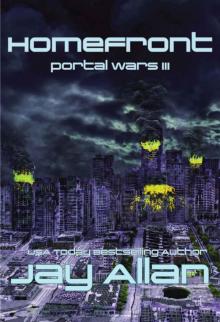 Homefront: Portal Wars III
Homefront: Portal Wars III Tombstone (crimson worlds)
Tombstone (crimson worlds) Crimson Worlds: Prequel - Bitter Glory
Crimson Worlds: Prequel - Bitter Glory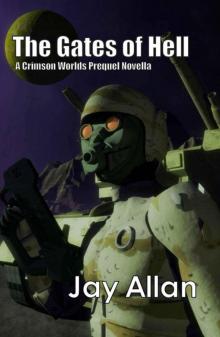 Crimson Worlds: Prequel - The Gates of Hell
Crimson Worlds: Prequel - The Gates of Hell The Fall: Crimson Worlds IX
The Fall: Crimson Worlds IX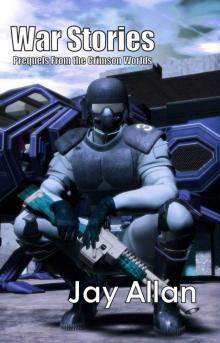 Crimson Worlds: War Stories: 3 Crimson Worlds Prequel Novellas
Crimson Worlds: War Stories: 3 Crimson Worlds Prequel Novellas Enemy in the Dark
Enemy in the Dark Crimson Worlds Collection II
Crimson Worlds Collection II